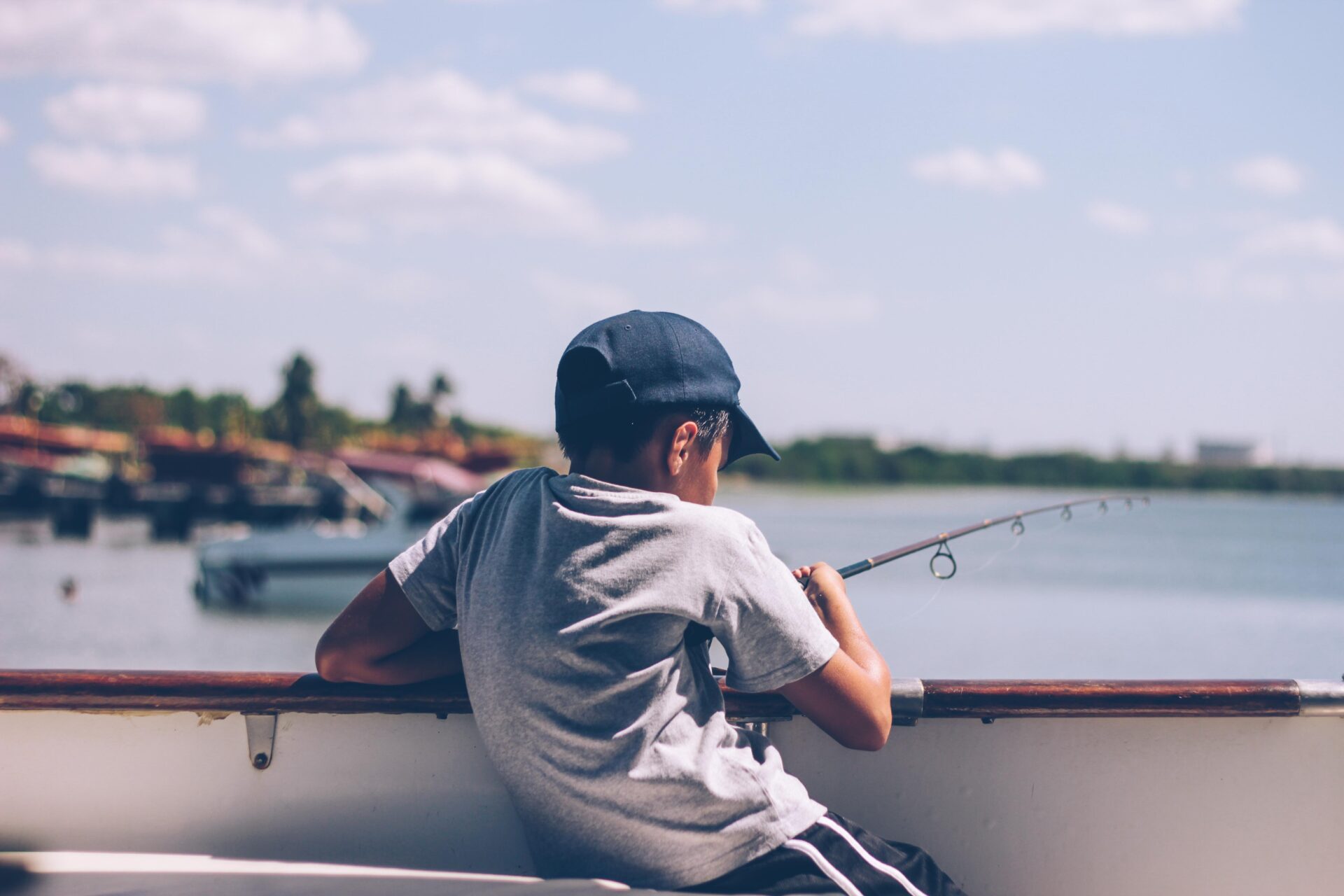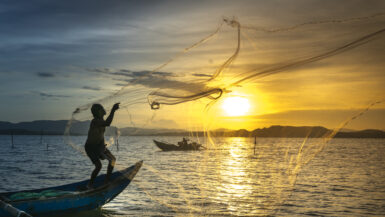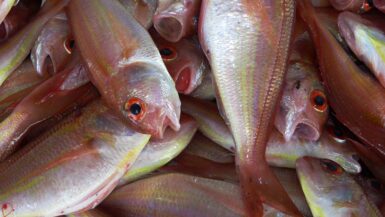Fishing for pike and musky in freshwater can be an exciting and rewarding experience for anglers of all levels. These two species can be notoriously difficult to catch due to their ambush hunting style, large size, and elusive nature. However, with the right techniques and tips, anglers can be rewarded with the thrill of a successful catch. In this article, we will explore the best tips and techniques for fishing for pike and musky in freshwater. We will cover topics such as equipment, lures, and techniques to help anglers catch these iconic fish. By the end of this article, anglers should have a better understanding of how to find and catch these two species.
Gear for Pike and Musky Fishing
Pike and musky are two of the most notoriously hard fighting freshwater fish out there, and as such, require specific tackle and rigs to be successful. The angler targeting these species should be sure to bring a selection of lures and baits in different sizes and colors, as well as multiple spinning and baitcasting rods and reels.
Best Lures for Pike and Musky Fishing
Spoon lures, jerkbaits, and spinnerbaits are all effective when targeting pike and musky, and should absolutely be included in the angler’s tackle box. A selection of crankbaits, topwaters, and inline spinners can also be used to great effect. Soft plastics, such as worms and crawfish, are also a viable option.
Leaders and Hooks for Pike and Musky Fishing
Leaders are essential to successful pike and musky fishing, as these species have sharp teeth that can easily cut through most lines. Leaders made from wire or heavy monofilament are both recommended. When it comes to hooks, a variety of sizes should be brought, as these fish can range from small to very large.
Best Rods and Reels for Pike and Musky Fishing
To best target these species, a selection of spinning and baitcasting rods and reels should be included in the angler’s tackle box. Pike and musky will certainly test the strength of the angler’s gear, so it is important to bring heavy, durable models that can hold up to the fight.
Additional Gear for Pike and Musky Fishing
In addition to the tackle, rods, and reels mentioned above, there are some other bits of gear that anglers targeting pike and musky should bring with them. A landing or net is essential for landing larger specimens, and a pair of heavy leather gloves or pliers is necessary to handle and unhook fish safely.
Best Lures for Pike and Musky
Fishing for Pike and Musky in freshwater requires a deep understanding of their biology and behavior. Pike and Musky tend to be aggressive predators that hunt for bait fish, frogs, and crayfish. In order to successfully land one of these prized game fish, anglers must be familiar with the deep and shallow waters in which they live and their preference for certain lures and baits.
Identifying Preferred Locations
Pike and Musky are commonly found in weedy bays, along weed lines, and near points or drop-offs. The key to targeting them is to identify the perfect structure that will provide the right combination of cover and ambush points. Casting into the current will often help anglers to attract the interest of these large-toothed fish.
Best Lures for Pike and Musky
When it comes to lures and baits, there are a lot of options that anglers can choose from. However, some of the most popular choices for pike and musky include crankbaits, jerkbaits, spoons, spinners, and jigs. Crankbaits and jerkbaits are both effective for targeting pike due to their erratic swimming action, while spinners and spoons are often used to entice musky. Lure selection will depend on conditions such as water depth and clarity, so having a variety of lures on hand is essential.
Attracting Strikes
One important factor to keep in mind when trolling for Pike and Musky is to make sure the lures move through the water at a slow and steady speed. Jerkbaits and crankbaits should be worked with a series of short twitches and pauses, while spinners and spoons should be retrieved with an even cadence. It’s also important to keep the lures near cover and structure for better success.
Other Considerations
Once an angler has identified the perfect spot, lure selection, and technique, it’s important to remember that patience and proper presentation are essential for success when fishing for Pike and Musky. It’s also important to pay close attention to the weather and water conditions before heading out on the water. Windy conditions can create waves that can make it difficult to fish, while warm weather can cause Pike and Musky to become less active. Taking the time to understand the environment, habits, and techniques that make these freshwater game fish so popular with anglers will help ensure a successful and rewarding fishing trip.
Best Locations for Pike and Musky Fishing
For the freshwater angler who is seeking the thrill of catching pike and musky, understanding the best locations to fish is essential. From large and small lakes to rivers, there are many different places to cast a line in search of these exciting freshwater fish. Knowing the best locations for pike and musky fishing can help maximize an angler’s chances of success.
Choosing Lakes for Pike and Musky Fishing
When selecting a lake for pike or musky fishing, there’s a lot to consider. For starters, the size of the lake can play a role in the success rate of anglers. Large lakes tend to offer more fishing opportunities since they often have larger numbers of fish. Smaller lakes with more abundant food sources are better options for anglers seeking to target larger specimens. Additionally, look for lakes that have ample weed beds and a variety of structure, such as docks, bridges, and fallen trees. This type of structure creates prime habitat for pike and musky.
The Best Rivers for Pike and Musky Fishing
Rivers are also excellent locations for pike and musky fishing. When looking for the best river locations, the flow rate and depth of the water are important factors to consider. Rivers that are slow moving with deep pools and sharp turns are ideal spots for anglers to cast their lines and target pike and musky. Additionally, look for rivers with a variety of cover, such as trees and overhanging branches. This type of cover creates an ideal habitat for these species, which increases the likelihood of a successful outing.
Tips for Finding the Best Locations for Pike and Musky Fishing
For anglers seeking the best fishing spots, there are a few tips to keep in mind. Do research on the lake or river that you are considering and check out local fishing reports to get an idea of the species of fish that are present and their population. Additionally, reach out to local bait shops and fishing guides to get the inside scoop on the best places to fish. These knowledgeable sources can provide invaluable information about the fish in the area, current conditions, and any additional tips for success.
By understanding the best locations for pike and musky fishing, anglers can maximize their chances of success and have a rewarding and exciting experience. With a bit of research and local knowledge, anglers can easily find the best lakes and rivers to cast their lines and target these thrilling freshwater fish.
Boat or Bank Fishing for Pike and Musky
When fishing for pike and musky, the right bait can make all the difference. Popular choices for boat fishing include live bait such as minnows, as well as artificial lures. Although artificial lures can be effective, live bait is often the best choice because the smell and motion of a live bait can be irresistible. For the best results when bank fishing, try to use a lure or bait that will move slowly and erratically, such as smaller jerk baits, spinners, or spoons. A good rule of thumb is to use a slower retrieve when fishing from the bank as musky and pike will typically be more sedentary.
Boat versus Bank Fishing for Pike and Musky
Boat fishing for pike and musky affords the angler more flexibility and allows them to explore larger areas of the lake in search of their prey. This can be an advantage when the fish are well dispersed. Bank fishing, on the other hand, is much more limited in terms of range and water coverage. On the other hand, it can be a very effective and enjoyable way to fish for these species in certain situations, such as in shallow weedy areas.
Best Fishing Tactics for Success with Pike and Musky
Whether you’re fishing from a boat or the bank, it’s important to remember that pike and musky are ambush predators. This means they prefer to lie in wait for their prey and then pounce when an opportunity presents itself. To increase your chances of success when fishing for these species, use a slow, erratic retrieve with a combination of jerk-baits, spinners, and spoons at different depths. If you’re fishing from a boat, troll slowly, covering a wide range of depths, to increase your chances of finding active fish.
Best Times of Day for Fishing Pike and Musky
Fishing for pike and musky can be productive throughout the day, but peak activity usually occurs at dawn and dusk. During these times, the sun is low in the sky and the water temperature is cooler. This is when the fish are most active, so be sure to get out early and late to increase your chances of success. In addition, the cooler temperatures in the evening can make for a more enjoyable experience.
Handling of Pike and Musky
Pike and musky fishing can be a rewarding yet challenging angling experience. Both species can be found in freshwater lakes, ponds and rivers, and understanding how to identify them is a key to success. Pike have a long, slender body, yellowish spots on a greenish or brownish background, a long dorsal fin and a single dorsal pelvic fin. Musky have a more cylindrical body, brownish colors and spots, and a double dorsal fin along with a single anal fin.
The Best Fishing Gear for Pike and Musky
When targeting pike and musky in freshwater, anglers need to use the right fishing gear to be successful. The best rods are made of graphite since they are lightweight yet strong and can handle the tug of a big pike or musky. Anglers can choose from various sizes and lengths of rods, but most anglers prefer rods in the 6 to 8 feet range that are rated for pike and musky. The best types of reels for these fish include high-speed baitcasting reels and spinning reels, as they offer more power when battling big fish.
Techniques for Catching Pike and Musky
It is important for anglers to select the right lures and fishing techniques when targeting pike and musky in freshwater. The most popular lures for pike and musky include spinnerbaits, crankbaits, jerkbaits, jigs and soft plastics. Anglers can also use live bait such as worms, minnows and leeches. It is important to use the right technique for each lure, such as slow-rolling for crankbaits, twitching for jerkbaits and slow reeling for jigs.
Handling of Pike and Musky
When catching pike and musky, it is important to handle them with care. Always wet your hands before handling them, as this will reduce their stress. Anglers should also use a landing net to scoop up the fish and should never attempt to grab them by the tail or gills. If releasing the fish, anglers should hold them in the water with their hands until they are ready to swim away.
Seasonal Considerations for Pike and Musky Fishing
When fishing for pike and musky in freshwater, it is important to keep seasonal considerations in mind. Different times of the year call for different tactics and methods, so being aware of seasonal considerations can help to ensure successful fishing trips.
Spring Fishing for Pike and Musky
When fishing for pike and musky in the springtime, anglers need to be aware of the seasonal changes that are taking place in the waters. As the water begins to warm, fish tend to move deeper and begin actively feeding. In the early springtime, anglers can have success using spoons, spinners, and crankbaits. As the season progresses, fish tend to become more active and can be caught using jerkbaits, swimbaits, and soft plastics.
Summer Fishing for Pike and Musky
In the summertime, pike and musky tend to move to deeper, cooler waters. In order to successfully target these species, anglers should concentrate their efforts in the deeper areas, such as drop offs, points, and weed lines. During the summer months, lures such as crankbaits, big spinner baits, and large jerkbaits can be effective.
Fall Fishing for Pike and Musky
As temperatures begin to cool in the fall months, pike and musky begin to move to shallower waters in search of food. During this time, anglers should focus their efforts on shallow flats and bays in search of these fish. Lures such as crankbaits, jerkbaits, and swimbaits can be effective during the fall months.
Winter Fishing for Pike and Musky
During the winter months, water temperatures drop significantly, making it difficult for fish to remain active. Anglers should focus their efforts on the warmer, deeper waters. Lures such as blade baits and jigs can be effective. Additionally, it may be possible to catch pike and musky using live baits such as worms, minnows, and leeches.
By keeping these seasonal considerations in mind, anglers can increase their chances of success when fishing for pike and musky in freshwater. With the right preparation and knowledge, anglers can have successful fishing trips all year long.
Reaping the Benefits of Freshwater Fishing
Fishing for pike and musky in freshwater provides recreational anglers with a unique experience. With patience and the right techniques, fishermen can find themselves a large and thrilling catch. In addition to understanding the behavior and habitat of pike and musky, it is important to choose the right rod, reel, and bait. Spoons, jerkbaits, and crankbaits are some of the more successful lures for these fish, and it is vital to determine the depth of the water to determine the proper size. Knowing the lake and the location of these fish is key to a successful experience. Following these tips and techniques are sure to help you bring home a thrilling catch.





Leave a reply